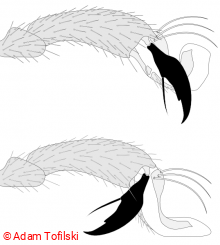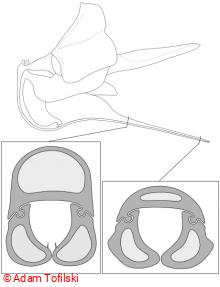In natural conditions honey bee nest is usually located inside hollow tree The nest of the honey bee (Apis mellifera),
, Volume 23, p.495-512, (1976)
[1]. Other possible locations are nests of arboreal termites The natural nest and nest density of the Africanized honey bee (Hymenoptera, Apidae) near Tapachula, Chiapas, Mexico,
, Volume 123, Number 2, p.353–359, (1991)
[2], rock crevices, ground holes or man-made cavities including bird nest boxes Use of wood duck nest boxes by swarming honey bees in California's central valley,
, Volume 81, p.167-169, (1995)
[3]Use of small-volume nest boxes by Apis mellifera L. (European honey bees) in Alabama,
, Volume 6, Number 2, p.370–375, (2007)
[4]. Previously occupied cavities are preferred Honey bees choosing a home prefer previously occupied cavities,
, Volume 32, Number 2, p.217–220, (1985)
[5]Interphyletic relationships in the use of nesting cavities: mutualism, competition and amensalism among hymenopterans and vertebrates,
, p.(in press), (2013)
[6]. Unprotected nests are relatively rare, particularly in colder climate. Choice of suitable nest site is important for survival and growth of the colony because it determines its ability to defend and control temperature and other environmental conditions inside the nest.
Honey bees spend in their nest most of their lives. Workers leave it in order to collect food and propolis. Queen and drones leave the nest for mating flights. Also during swarming part of the colony with queen, workers and drones departs from the old nest and builds a new one.
For review see: Honeybee nests,
, Berlin, p.389, (2014)
[7]
- Log in to post comments
- Log in to post comments





